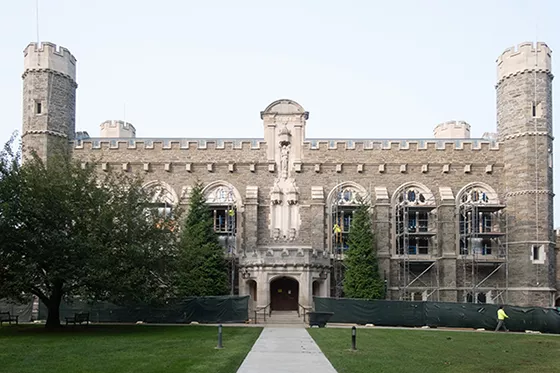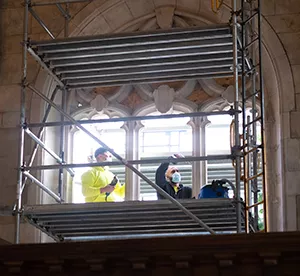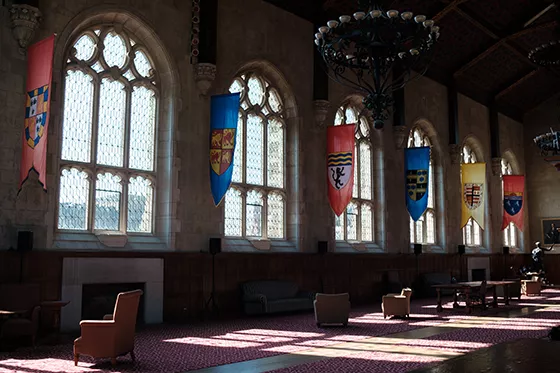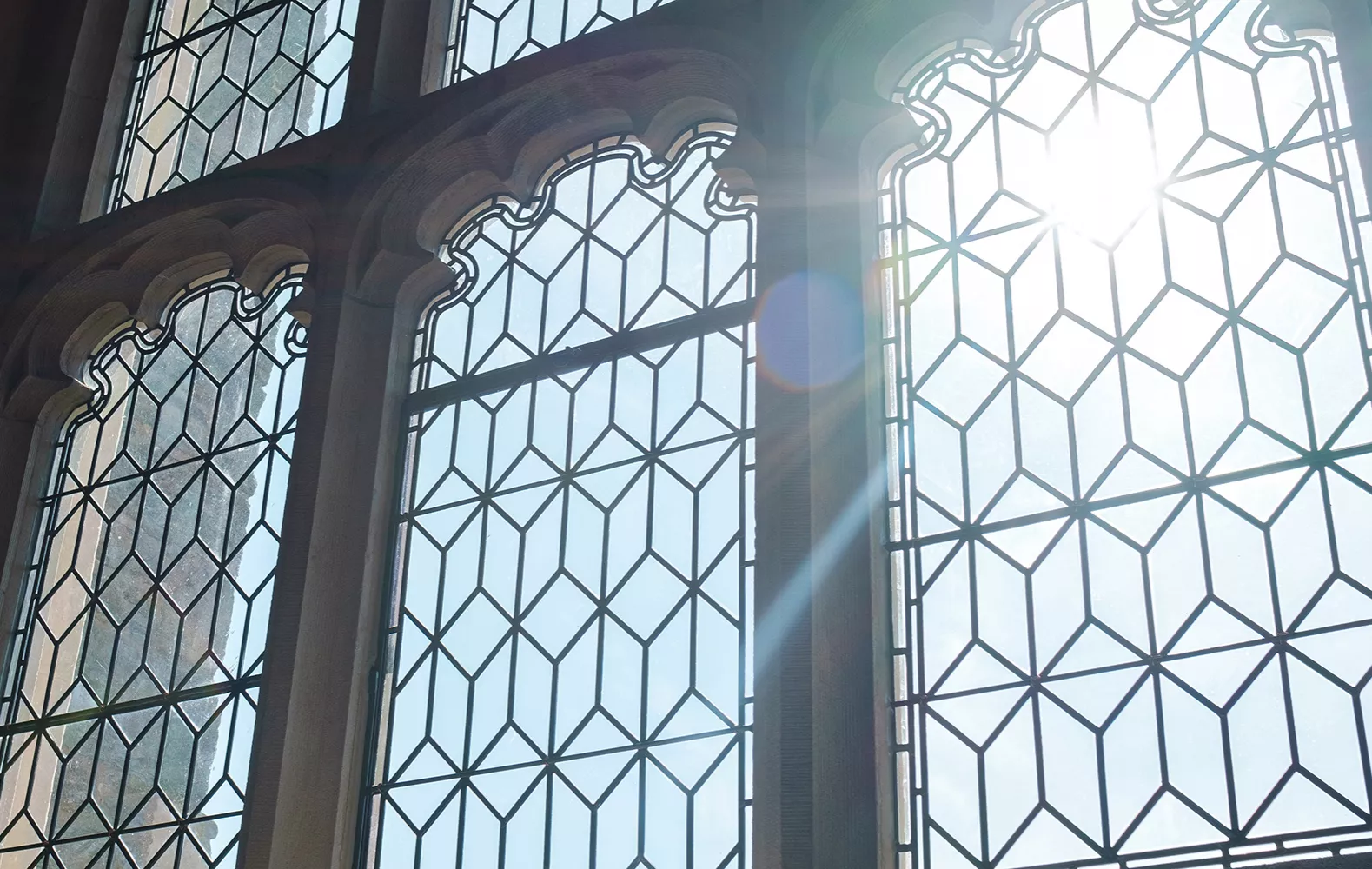When students returned to campus this semester, for some it was the first time they were able to see Old Library in all its splendor, free of the scaffolding that had enveloped the building and closed Great Hall since April of 2020.
During the seven-month project, each of the Great Hall’s 368 ornate and intricate leaded glass windows was removed and fully repaned.
This is the first time since the building was constructed in 1901-07 that a project of this nature has been undertaken.
“When the building was originally built, the glass and the stone were intrinsically installed at the same time. The lead glass windows were made in big sheets, about five feet tall by 30 inches wide, and as the stone was being placed, the sheets of leaded glass were being placed in the stone so the next piece locked it in,” explains Jim McGaffin, an associate director in the Facilities office and manager of the project.
The restoration was necessary because over time, pieces of the glass broke or fell out, often due to the lead caming separating pieces of glass becoming damaged, and, most importantly because metal from around the windows had rusted and was compromising the adjoining limestone, causing parts of the stone facade to fall off.
To remove the windows required the breaking of some of the center glass pieces, which allowed for other pieces to be kept whole and pulled out of the window enclosures.
“The building is a national historic landmark and our goal was to continue to use as much of the original glass as possible. The Great Hall, and those windows, are what make that building historically significant,” says McGaffin.
As the work began, there was still some uncertainty as to what to do about replacing the glass that had to be broken. And as workers stacked the now-removed windows onto each other, something became clear—or more accurately—not clear.
“The more we stacked them on top of each other, the more green the glass looked. It didn’t look clear anymore,” recalls McGaffin.
McGaffin and his team did some research and found out that the glass turned out to be from a French manufacturer, Verrerie de Saint-Just.
“There was a moment when we weren’t sure if we were going to be able to finish,” says McGaffin. “It’s during COVID-19 and nothing is coming in our out of the U.S. and it turns out this glass is from France.”
Luckily, the team was able to find U.S. distributors that had the green-tinged glass and were able to replace the broken pieces.
“If you’re on campus and it’s a sunny day, the green really shows now.”
Because there are so few companies that do the sort of restoration work the College needed, and the scale of the project was so big and the original timeline so small, the College had to plan the work out a year in advance. The companies chosen to do the work were Femenella and Asscociates, from Branchburgh, N.J. and Rolf Studio, out of Mount Vernon, N.Y.
“For the companies we worked with, we were basically asking them to commit their entire capacity to this project for 14 weeks,” says McGaffin. “COVID-19 hit and that, of course, changed everything.”
Initially, the pandemic put the project on hold but as state guidelines changed, some workers were able to return to campus and continue the project.
“They did an exceptional job of getting a limited workforce back to campus,” says McGaffin. “The pandemic took a month of work time away from them and they finished only a week later than originally scheduled.”



